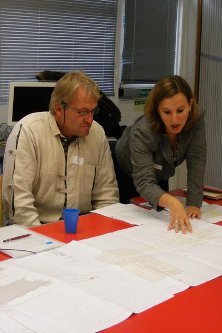Stakeholder engagement through the Mosaic Approach
From 2004 I have collaborated with Alison Clark, a leading educational researcher in childhood studies, on working with young people, and most notably the use of the Mosaic Approach. The Mosaic Approach is a methodology that uses the inherent expertise of young people in creating meaningful, appropriate places for learning. Alison developed the Mosaic Approach at the Thomas Coram Research Unit at the Institute of Education (University of London) with Peter Moss. As part of the 'Living Spaces study, Alison used Ashmole Primary School and Nursery as a key case study in implementing the approach throughout the briefing, design and post-occupancy of the school. This research was published in numerous journals and reports around the world, and in 'Transforming Childrens' Spaces: Children's and Adults' Participation in Designing Learning Environments' by Alison Clark and published by Routledge Education.
The method uses techniques such as map making, photography and child-led tours to draw from children's own experience of their learning space. We asked 3-5 year old nursery children to show us 'what is important' to them, and then used these insights to articulate the design. Children showed us their own unique view of their existing spaces, revealing a specific physical geography due to their small stature, but also a place where their personal identity and familial relationships were particularly important.
This experience has resulted in a long-standing relationship with Alison, and ongoing discussions about how this methodology can be adapted and developed. The Mosaic Approach has been used effectively to engage young students, giving them tools to communicate with professionals about their experience of their learning spaces. It also has influenced their teacher's use of space as a part of learning in itself. Later I used this approach in consultations with primary and secondary school students at King David Campus as well as in discussions with parents and members of the school community. I believe this methodology would also be effective for working with special needs students.
This study illustrates the value of the engagement process not only in shaping the physical and visual design of learning spaces, but in fostering key conversations about the issues, needs and challenges of the school – making it an effective tool for establishing a design brief, evaluating the building itself, and for giving stakeholders and professionals common ground.
Click here to here to read an abstract about the book
Click here to order a copy of Transforming Children's Spaces on Amazon



